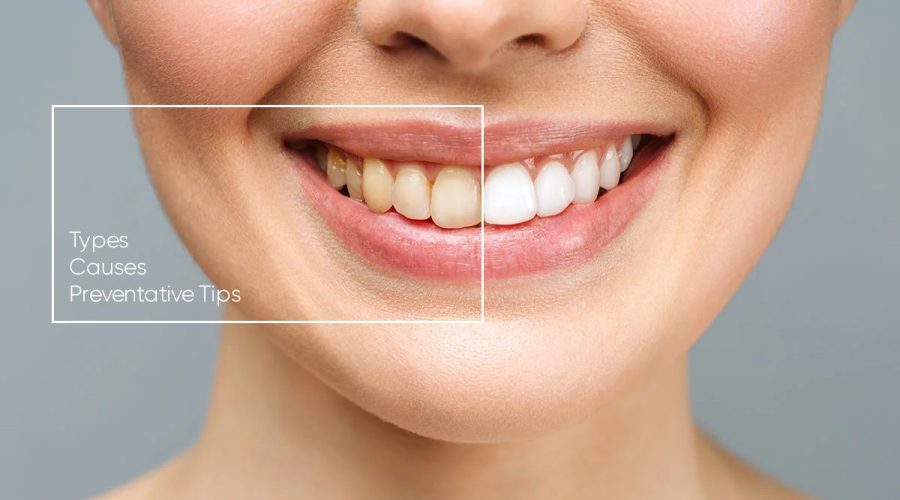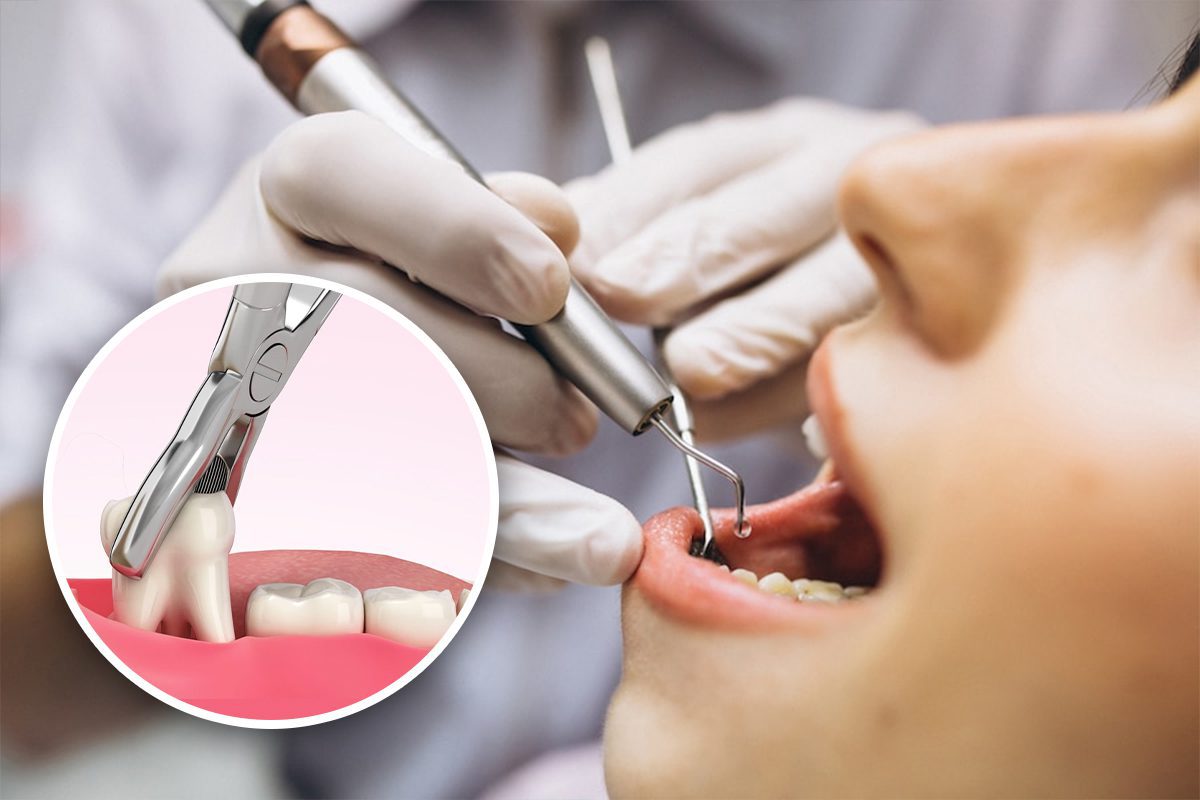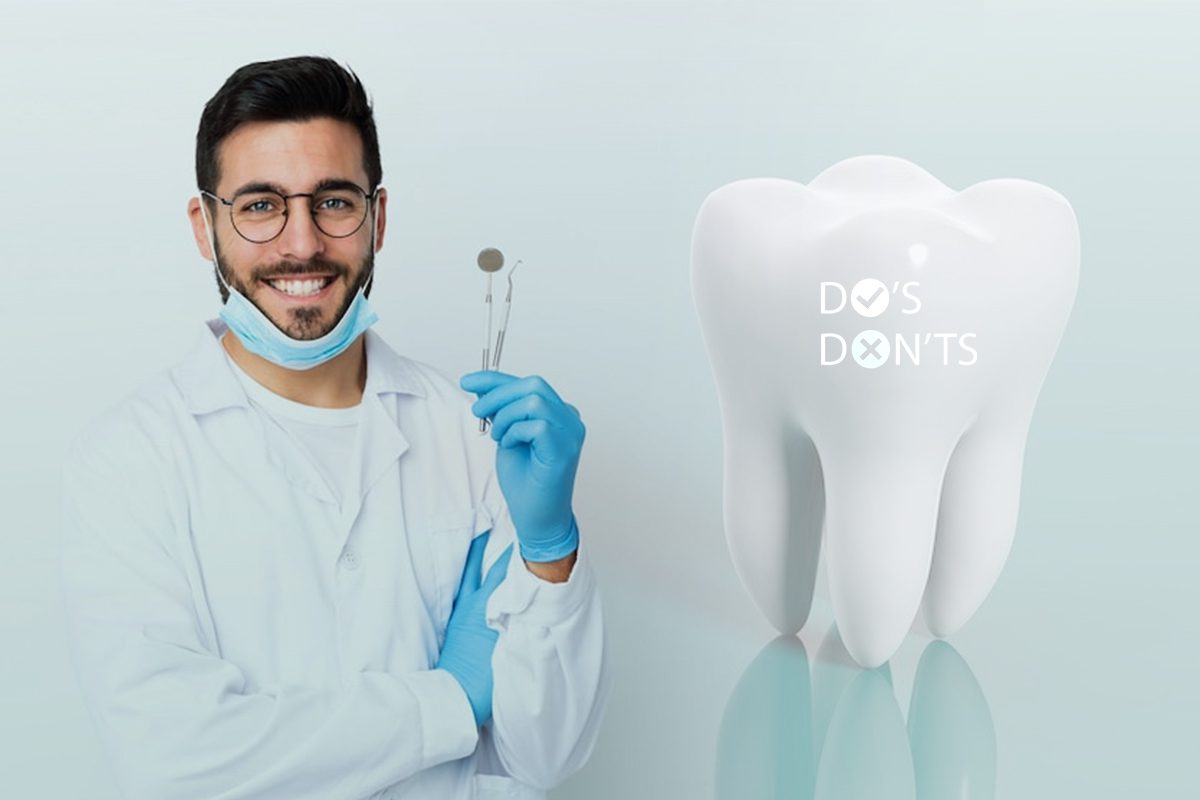The goal of every person is to have a bright, sparkling smile, but keeping pearly white teeth requires effort. Is your smile less white than it used to be? Could it be that they do not have the whiteness you desire?
You can lose a lot of shine in your teeth due to various factors. Besides destroying your bright smile, stained teeth can also lead to other oral health problems. Many people worry about tooth discoloration, but thankfully, there are treatments available that can prevent and remove stains.
Let’s discuss common causes and preventions of stained teeth.
Types of Tooth Discoloration
1. Intrinsic Staining
A small, localized, dark intrinsic tooth discoloration is more common than spread out over the entire tooth. Unlike surface stains, these stains are built into the tooth. Many medications can cause these stains as a side effect. A tooth can also show these symptoms due to excessive fluoride exposure, a disease, or the eroding enamel layer exposing the dentin layer.
2. Extrinsic Staining
The discolored teeth of this type are usually superficial, appear yellow, and spread out over the entire tooth surface. Most commonly, it occurs when you consume food or beverages that contain very strong colors. Berry, coffee, red wine, and smoking can cause extrinsic discoloration. The worst culprit is black tea, which is packed with high levels of tannins, which cling to the crevices of the teeth and cause them to stain.
3. Whitening Extrinsic Teeth Stains
When you eat staining food, ensure not to brush your teeth afterwards, as staining foods are generally acidic, which can cause erosion to the enamel and poor dental. Teeth whitening products and take-home kits by a dentist in Humbeek can usually remove these stains. By rinsing out your mouth with water after eating food that stains your teeth, you can prevent getting them in the first place.
4. Whitening Intrinsic Teeth Stains
Stains like these can’t be removed with teeth whitening solutions and must be covered with cosmetic products. The process can be accomplished with the utilization of dental veneers or dental crowns. Some types of stains are harder to avoid, as they can result from important medications you are taking. Until the stains have already appeared on your teeth, it’s hard to know if your teeth are over-fluoridated. Discoloration of teeth is caused by medications, and fluoride is not visible with veneers and crowns.
Most Common Cause Of Tooth Discoloration?
Several factors can cause stains on teeth. Foods and drinks can cause yellow teeth, and several biological factors, including your tooth enamel’s transparency, can also cause tooth discoloration.
You may be able to prevent some causes of stains, but many are beyond your control. If you have discolored teeth, you can use this comprehensive list to determine the cause and prevent further discoloration.
- Food & Drink: The beverages consumed daily, such as coffee, tea, dark sodas, red wine, and fruits and vegetables, can be responsible for discoloring our teeth.
- Tobacco: Smoking and chewing tobacco can cause discolored teeth as they contain nicotine and other chemicals.
- Oral Care: If you have poor dental hygiene, like not brushing your teeth well or flossing rarely, you may have discolored teeth.
- Trauma or Disease: Many people are unaware that discoloration of their teeth can be caused by enamel development at any point in the child’s life – whether that occurs during their first year of life or their teenage years. Discolored teeth can also be caused by trauma to adult teeth.
- Age: Age causes tooth enamel to thin. Our teeth may become yellow when this happens. During later years of life, your enamel thins naturally, making stains from coffee, tea, and cigarettes more visible. Often, stains appear because of ageing, not because they were caused by it.
- Medical Treatments: Some medical conditions can lead to stains on the teeth, as well as several medications in particular, such as antihypertensives, chemotherapy, antihistamines, and some antipsychotic medications, which can cause stains to appear on the teeth.
Also Read: 7 DIY Teeth Cleaning Tips at Home
Preventative Tips
Preventing stains is easier than fixing them. Preventative measures are crucial regardless of whether you have stains that need to be treated or if you already have a bright, white smile. You can prevent stains by following these tips.
- Maintain good oral hygiene after eating pigmented foods. After consuming pigmented food or drinks, the dentist in Antwerp recommends brushing and flossing your teeth immediately. You can try drinking water or swishing your teeth with water if that’s not possible.
- Keep your mouth healthy. Dental professionals recommend brushing your teeth at least three times daily, flossing daily, using a water flosser, and using whitening toothpaste or mouthwash. If you are looking for a way to minimize those tough-to-remove stains between your teeth and gums, a mouth rinse or a water flosser are excellent options.
- Change your habits. Ask your physician about a cessation program if you smoke or chew tobacco. Additionally, food and drink may stain your teeth; thus, start with eating green leafy vegetables and cutting back on pigmented items. Keep a toothbrush on hand to prevent stain-causing matter from accumulating on your teeth if that is hard to do.
Tooth Discoloration Treatments
Treatments available can reverse tooth discoloration if your teeth are already stained.
The first line of defense is to use whitening kinds of toothpaste, whitening strips, and other products as soon as possible. The next step you can take if these at-home teeth whitening products do not work for you is to have professional teeth whitening done by a Dentist in Mortsel.
Dental bonding, veneers, and crowns may be used for teeth that are deeply stained and don’t respond to whitening treatments. Due to the cost of these options, most patients prefer to try whitening options first since they are cheaper options.
Make sure you change your habit post-procedure if you have dental bonding, crowns, or veneers if you have had. Once dental restorations have been installed, they cannot be whitened. Lastly, maintaining good oral hygiene, limiting stain-causing beverages, and avoiding tobacco are important habits to establish.
If you’re ready for a brighter smile, call us at Euro Dent and schedule an appointment with our dentists in Grimbergen today!




